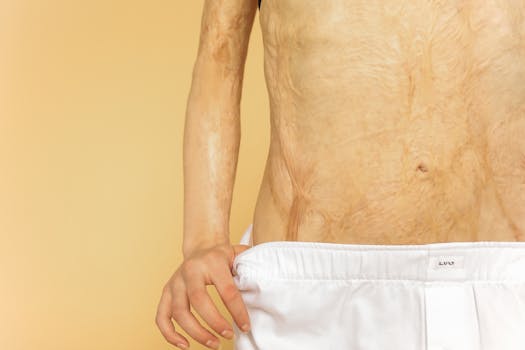Understanding Stretch Marks
Stretch marks, medically known as striae, are a common skin condition that occurs when the skin is stretched rapidly due to various factors such as pregnancy, rapid weight gain or loss, puberty, and certain medical conditions. These marks can appear as red, purple, or white streaks on the skin, often causing concern for those who experience them. While they are not harmful, many individuals seek ways to fade their appearance for cosmetic reasons.
What Causes Stretch Marks?
Stretch marks develop when the dermis, the middle layer of skin, is stretched beyond its elasticity. This can happen due to:
- Pregnancy: Approximately 50-90% of pregnant women experience stretch marks, particularly during the third trimester.
- Rapid Weight Changes: Gaining or losing a significant amount of weight in a short period can lead to the formation of stretch marks.
- Puberty: Adolescents may develop stretch marks during growth spurts.
- Medical Conditions: Conditions like Cushing’s syndrome and Marfan syndrome can also contribute to the development of stretch marks.
Types of Stretch Marks
Stretch marks can be categorized based on their color and age:
- Red or Purple Stretch Marks: These are newer marks that are still in the inflammatory phase. They may appear raised and are often more noticeable.
- White or Silver Stretch Marks: These are older marks that have faded over time. They are typically flatter and less noticeable but can still be a source of concern for many.
Effective Treatments to Fade Stretch Marks
While completely eliminating stretch marks may not be possible, several treatments can help reduce their appearance. Here are some of the most effective options:
Topical Treatments
Over-the-counter creams and prescription medications can help improve the appearance of stretch marks. Look for products containing:
- Retinoids: These vitamin A derivatives can promote collagen production and skin renewal.
- Hyaluronic Acid: This ingredient helps retain moisture and can improve skin elasticity.
- Cocoa Butter and Shea Butter: While not scientifically proven, many people find these natural moisturizers helpful in keeping skin hydrated.
Laser Therapy
Laser treatments can be effective for both red and white stretch marks. They work by stimulating collagen production and improving skin texture. Different types of lasers may be used, including:
- Pulsed Dye Laser: Best for red or purple stretch marks.
- Fractional Laser: Effective for older, white stretch marks.
Microdermabrasion and Chemical Peels
These procedures involve exfoliating the skin to promote new skin growth. Microdermabrasion uses tiny crystals to remove the outer layer of skin, while chemical peels use acids to achieve similar results. Both methods can help improve the texture and appearance of stretch marks.
Microneedling
This treatment involves using fine needles to create micro-injuries in the skin, stimulating collagen production. Microneedling can be effective for reducing the appearance of both red and white stretch marks.
Home Remedies and Lifestyle Changes
In addition to professional treatments, several home remedies and lifestyle changes may help improve the appearance of stretch marks:
- Stay Hydrated: Drinking plenty of water can help maintain skin elasticity.
- Healthy Diet: Consuming a balanced diet rich in vitamins C and E, zinc, and silica can support skin health.
- Regular Exercise: Maintaining a healthy weight through exercise can prevent the formation of new stretch marks.
Conclusion
Stretch marks are a common skin condition that can affect anyone, but they are particularly prevalent during significant life changes such as pregnancy and puberty. While they may be unsightly for some, various treatments and lifestyle changes can help fade their appearance. From topical treatments and laser therapy to home remedies, individuals have multiple options to consider. Ultimately, understanding the causes and types of stretch marks is the first step toward effective management. Embracing skin health through hydration, nutrition, and professional care can lead to improved confidence and well-being.
